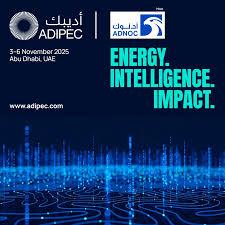Pioneering the AI Frontier in Energy Exploration
Artificial intelligence emerges as a game-changer in the upstream segment of the energy value chain, where exploration and production demand precision and foresight. Companies now leverage AI algorithms to analyze vast seismic datasets, predicting subsurface structures with unprecedented accuracy. For instance, machine learning models process geophysical data in real-time, enabling geologists to identify potential reservoirs faster than traditional methods ever allowed. This shift not only accelerates discovery but also minimizes environmental risks by optimizing drilling locations.
AI-driven predictive analytics transform reservoir management by simulating fluid dynamics and production declines. Operators deploy these tools to forecast output variations, adjusting extraction strategies proactively. Consequently, energy firms achieve higher recovery rates while reducing operational costs. As the industry embraces these innovations, stakeholders witness a paradigm shift from reactive to anticipatory decision-making, fostering sustainable practices that align with global energy demands.
In addition, AI integrates with Internet of Things (IoT) sensors on drilling rigs, providing continuous monitoring that detects anomalies before they escalate into costly failures. Engineers actively interpret this data to refine equipment performance, extending asset lifespans and enhancing safety protocols. Therefore, the upstream sector stands on the brink of a more efficient era, where AI not only uncovers hidden resources but also safeguards the planet's finite supplies.
Streamlining the Midstream: AI's Mastery Over Logistics and Infrastructure
AI revolutionizes the midstream phase by optimizing transportation, storage, and pipeline networks, ensuring seamless energy flow across global supply lines. Advanced optimization algorithms now route pipelines and tankers dynamically, accounting for weather patterns, market fluctuations, and geopolitical shifts. Logistics teams harness these systems to minimize delays, as AI forecasts bottlenecks and reroutes resources instantaneously. This proactive approach slashes transportation expenses and boosts overall supply chain resilience.
Furthermore, predictive maintenance powered by AI scans infrastructure for wear and tear using computer vision and sensor fusion. Maintenance crews receive alerts on potential leaks or corrosion, allowing them to intervene swiftly and prevent disruptions. As a result, midstream operators report significant reductions in downtime, with some achieving up to 30% efficiency gains. In essence, AI acts as an invisible guardian, fortifying the backbone of energy distribution against unforeseen challenges.
Transitioning to storage solutions, AI models predict demand surges by analyzing consumption trends and external factors like seasonal variations. Facility managers adjust inventory levels accordingly, preventing overflows or shortages that could ripple through the value chain. Consequently, the midstream evolves into a finely tuned symphony, where AI conducts harmony amid complexity, delivering reliable energy to downstream partners without interruption.
Revolutionizing Downstream Dynamics: AI's Touch in Refining and Distribution
In the downstream arena, AI enhances refining processes and distribution strategies, tailoring outputs to meet diverse consumer needs with remarkable precision. Refineries employ neural networks to optimize crude oil blending, maximizing yield while adhering to stringent emission standards. Process engineers fine-tune operations in real-time, as AI simulates chemical reactions and adjusts variables to produce higher-quality fuels. This innovation not only elevates product efficiency but also complies with evolving regulatory landscapes.
Additionally, AI-powered demand forecasting integrates retail data, weather analytics, and economic indicators to streamline distribution networks. Marketers distribute refined products to stations and industries with pinpoint accuracy, reducing waste from overstocking. For example, dynamic pricing algorithms respond to local demand, ensuring competitive edges in volatile markets. Thus, downstream entities thrive by transforming raw data into actionable insights that drive profitability and customer satisfaction.
Beyond refining, AI facilitates personalized energy solutions for end-users, such as smart grid integrations that balance supply and demand. Utilities deploy these systems to manage peak loads, incorporating renewable inputs seamlessly. Therefore, the downstream sector pioneers a customer-centric model, where AI bridges the gap between production and consumption, fostering innovation that resonates across the entire value chain.
Spotlight on ADIPEC 2025: Charting AI's Trajectory in the Energy Horizon
ADIPEC 2025 stands as a beacon for AI's integration into the energy ecosystem, showcasing groundbreaking applications that redefine industry norms. Exhibitors demonstrate AI platforms that unify the value chain, from predictive exploration tools to holistic supply chain dashboards. Attendees engage with interactive simulations, witnessing how these technologies mitigate risks and amplify sustainability efforts. As the event unfolds, it catalyzes collaborations that propel AI adoption forward.
Organized by the Exhibition Company in Abu Dhabi, Adipec Abu Dhabi 2025 highlights keynotes from industry leaders who share case studies of AI-driven transformations. For instance, sessions explore blockchain-AI hybrids for secure data sharing across upstream and downstream operations. Participants network to forge partnerships, ensuring that insights from the conference translate into real-world implementations. Moreover, the event emphasizes ethical AI deployment, addressing biases and cybersecurity in energy contexts.
Looking ahead, ADIPEC 2025 inspires a vision where AI not only optimizes current processes but also pioneers net-zero pathways. Innovators unveil prototypes for carbon capture enhanced by machine learning, accelerating the transition to cleaner energy. Consequently, the conference serves as a launchpad, empowering professionals to harness AI's potential amid pressing global challenges. In this dynamic forum, the energy value chain evolves, promising a future of efficiency, equity, and environmental stewardship.
The infusion of AI across the energy value chain heralds an era of unprecedented progress, as evidenced by the innovations spotlighted at ADIPEC 2025. Stakeholders actively embrace these tools to navigate complexities, from resource scarcity to regulatory pressures. By fostering interdisciplinary dialogues, the industry builds resilient frameworks that sustain growth. Ultimately, AI's transformative power equips the sector to meet tomorrow's demands today, securing a vibrant energy landscape for generations to come.

